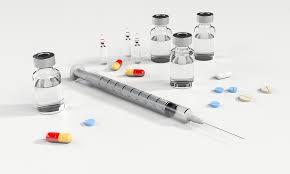 Anyone who has turned on the news or picked up a paper recently is probably aware of the ongoing opioid crisis in the United States today. Prescriptions for powerful opioid painkillers such as OxyContin, Hydrocodone, and Fentanyl have quadrupled in recent decades, from 76 million in 1991 to nearly 300 million in 2014, while overdose deaths are reaching epidemic numbers. In 2015, opioids were involved in over 33,000 deaths, according to the U.S. Centers for Disease Control. Given those numbers, it is perhaps unsurprising that a recent study in the American Journal of Public Health found that drugged driving is also on the rise. This increase in people driving while on drugs, and even driving while overdosing, comes as drunk driving rates have been plummeting in the country.
Anyone who has turned on the news or picked up a paper recently is probably aware of the ongoing opioid crisis in the United States today. Prescriptions for powerful opioid painkillers such as OxyContin, Hydrocodone, and Fentanyl have quadrupled in recent decades, from 76 million in 1991 to nearly 300 million in 2014, while overdose deaths are reaching epidemic numbers. In 2015, opioids were involved in over 33,000 deaths, according to the U.S. Centers for Disease Control. Given those numbers, it is perhaps unsurprising that a recent study in the American Journal of Public Health found that drugged driving is also on the rise. This increase in people driving while on drugs, and even driving while overdosing, comes as drunk driving rates have been plummeting in the country.
Drugged Driving Rises as Drunk Driving Falls
Thanks to an extensive effort by both public agencies and private organizations, there has been a substantial decline in the number of Americans who drink alcohol and drive over the past three decades.
In 1982, for example, more than 20,000 people died in drunk driving accidents in the United States. By 2013, that number was halved to approximately 10,000. There continue to be substantial reductions in incidents of drunk driving, with convictions for the offense dropping by 33 percent since 2007.
Unfortunately, while the number of people who drink and drive is decreasing, the number of those who use drugs and drive appears to be on the rise. A 2015 survey by the National Highway Traffic Safety Administration revealed that nearly 22 percent of drivers had driven while under the influence of at least one drug in the previous year. This number included both illegal drugs, such as marijuana and cocaine, and legal ones, such as prescription painkillers and over-the-counter antihistamines.
Even more troubling, fatalities in automobile crashes where drugs were involved have nearly quadrupled in the past two decades, from 2,003 nationally in 1993 to 7,438 in 2015. (This statistic refers to crashes where drugs were detected in the drivers, but not necessarily cases where the drugs caused the crash.)
The Dangers of Drugged Driving
While many in the general public may believe that drugged driving is not as dangerous as drunk driving, public health officials stress that this perception is far from accurate. Both legal and illegal drugs negatively impact a driver’s ability to follow traffic laws, respond to changing conditions on the road, and accurately judge the distance from others vehicles and objects, all of which can have dangerous and even deadly results.
The study published in the American Journal of Public Health argues that this problem is made even worse by the rise of opioid addiction because the users of such drugs often overdose while driving their vehicles. According to some police officers, users of heroin, opioids, or similar drugs are sometimes so sick from withdrawal or so excited to get high that they will take the drugs in the vehicles instead of waiting to get home first. They could be back on the road before they overdose and lose consciousness, sometimes causing serious injury or death for other motorists.
Cities and States Fighting Back
The rise of the opioid crisis has been so sudden and so severe that many state and local governments are fighting back in the courts. Since 2014, ten states and dozens of cities and counties have sued drug companies, distributors, pharmacies, and doctors. These lawsuits typically allege that the defendants knowingly marketed and overprescribed opioids meant primarily for short-term use to treat long-term pain, causing a huge spike in drug addiction. GWC Managing Partner Louis C. Cairo recently spoke out about both the ongoing public health crisis and the lawsuits on WLS-AM 890’s Sirott and Murciano program.
To give one example of this litigation, West Virginia’s Cabell County recently filed suit against multiple drug manufacturers and pharmacies for “selling more than 40 million doses of opioid painkillers to the county between 2007 and 2012, during which time the county’s population was 96,319.” The litigating governments are seeking to recover expenses incurred from frequent opioid-related overdoses, such as public ambulance and hospital costs and drug emergency training for law enforcement.
Some of these lawsuits are yielding successful results. Most recently, Illinois Attorney General Lisa Madigan negotiated a $4.45 million settlement against Insys Therapeutics, a drug manufacturer that she alleged had marketed a highly addictive Fentanyl-based cancer pain drug for off-label uses.
Regardless of these legislative victories, however, the opioid crisis likely remains a genuine danger to the American public in the near future, including on the roads.
Chicago Personal Injury Lawyers
With more than $2 BILLION successfully recovered for our clients, the Chicago personal injury lawyers at GWC Injury Lawyers can provide the experience and determination you need to fight for the justice that you deserve.
If you or your loved one has been injured, by a drugged driver or in some other way, please contact GWC today to schedule a free consultation with one of our attorneys. Call our office at (312) 464-1234 or click here to chat with one of our representatives.
<< BACK TO BLOG POSTS